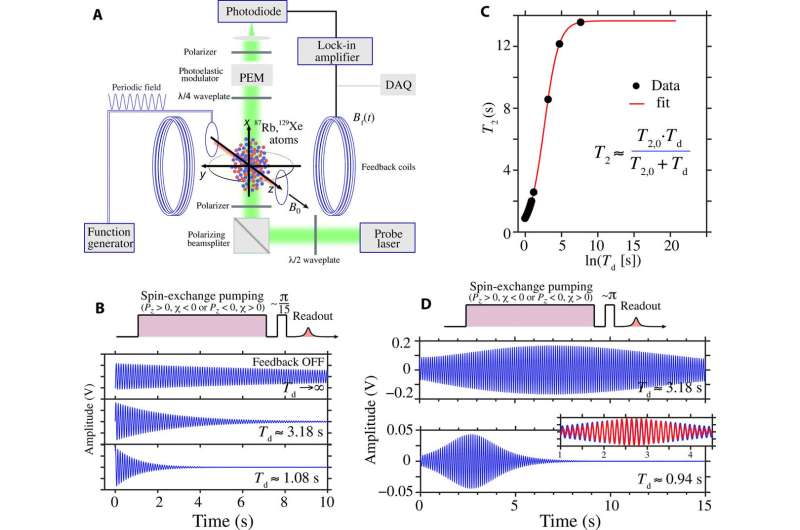Schematic of experimental setup and damping feedback mechanism. Credit: Science Advances (2021). DOI: 10.1126/sciadv.abe0719
A team of researchers affiliated with several institutions in China and one in Germany has investigated the possibility of extending maser techniques to Floquet systems. In their paper published in the journal Science Advances, the group describes their approach to creating a new type of maser by amplifying radio frequencies in Floquet systems. Ren-Bao Liu, with the Chinese University of Hong Kong, has published a Perspectives piece in the same journal issue outlining prior work with extending the capabilities of masers and the work done by the team on this latest effort.
Masers are devices that stimulate radiation emissions to generate electromagnetic radiation in the same range as microwaves. They are currently used in communications, spectroscopy and metrology applications. Because of their characteristics, scientists believe they could be used in other more exotic applications, as well, such as the study of dark matter. Most masers work by using transitions between stationary quantum states. In this new effort, the researchers envisioned a Floquet maser that would work by using a frequency comb phase-locked and spaced by a modulation frequency. Such a maser, they note, would provide a new platform for studying exotic physics, such as quantum many-body systems.
The maser created by the team began with a laser firing a beam through a wave plate at a polarizing beam splitter. The split beams then traveled to a modulated magnetic field with low frequency periodicity. A magnetic field was then applied to the nuclear spins of a sample of xenon-129, which was detected via a spin exchange with a small collection of rubidium-87 atoms. The spin-transition signals were then amplified and passed into coils that generated a second feedback magnetic field. The result was a magnetic field that created the upper and lower ladders of periodically modulated quantum states, also known as Floquet states. Testing of the device showed it was able to convert modulating signals at 1 to 100 Mhz to high-transition frequencies over 10 Hz, of an ultranarrow spectral linewidth of less than 0.3 Mhz.
The researchers suggest their maser could be used to measure low-frequency magnetic fields at subpicotesla-level sensitivities, which, they note, could play a role in the search for dark matter.
More information: Min Jiang et al. Floquet maser, Science Advances (2021). DOI: 10.1126/sciadv.abe0719
Journal information: Science Advances
© 2021 Science X Network
























